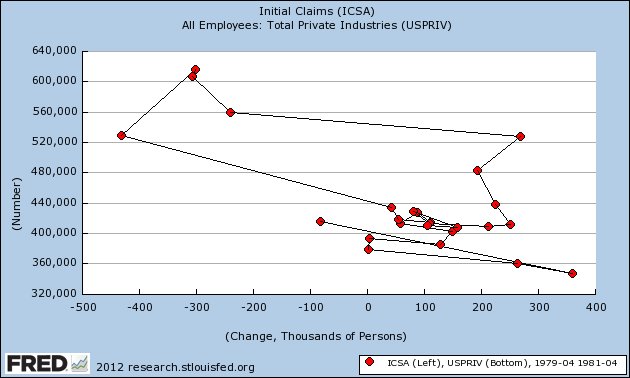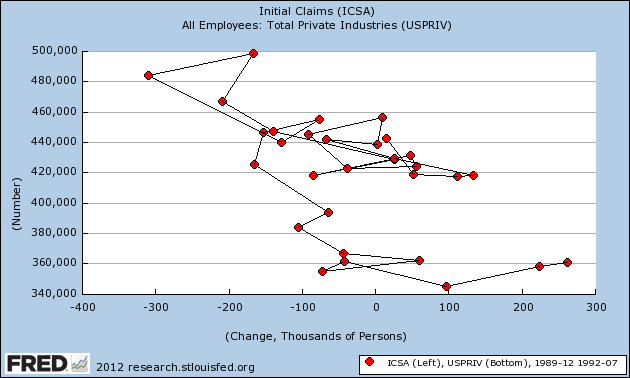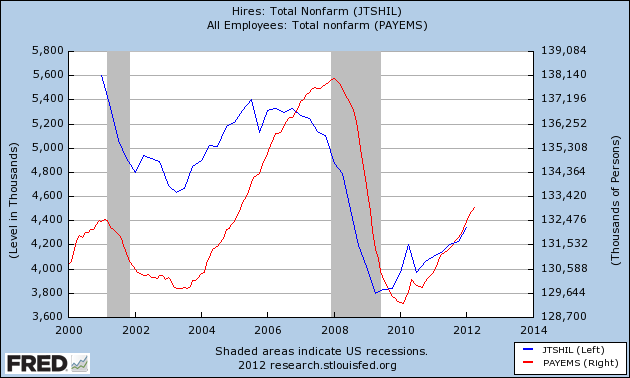I haven't been paying too much attention to the JOLTS survey because it only dates from 2000. Beyond that, the overall JOLTS index turned up very late after both the 2000 and 2008 recessions, well after most other data series. But a post yesterday by Bill McBride, who's been covering this index for blog-ages, caused a light bulb to go on over my head. In particular, it appears that the JOLTS hiring index captures the same dynamic that is shown in scatter graphs of initial claims vs. payrolls I've been running from time to time. Indeed, I think there's a pretty good argument that the JOLTS hiring index is a leading indicator for payrolls as a whole.
Here's why. Let's start with the scatter index I've been running of the 2008-09 "great recession" and recovery since:

As I said on Monday, typically heading into a recession, first hiring stops (moving the scatterpoints to the left in the graph) before significant firing begins. Similarly, as a recovery starts from the depths of a recession, new hiring begins in selected fields before the overall firing slows (moving the scatterpoints to the right)
The same can be said, more or less noisily, for each recession in the last 50 years, for which we have the data. For example, here's the 1980 recession:

And here's the 1990 recession:

In each case, the "recovery" correlation is upwards and to the right of the "recession" readings.
If, relatively speaking, hiring leads firing at both peaks and troughs, then hiring ought to lead payrolls as a whole (which basically are hirings minus firings) as well. So here's what happens when we compare the JOLTS hiring index with payrolls:

In case that isn't clear, the below graph is the same data except I've averaged JOLTS data by quarter:

It's crystal clear that, since the index has started, the JOLTS hiring index has been a leading indicator for the direction of payrolls as a whole, and my scatter graphs strongly suggest that the relationship is durable. Needless to say, if this is correct, then the JOLTS hiring index predicts that at very least payroll growth will remain positive for the next few months.